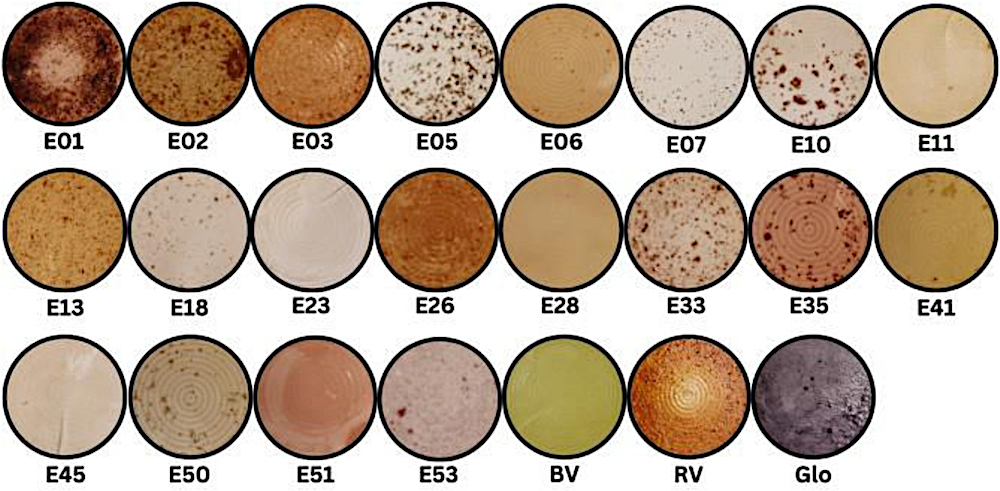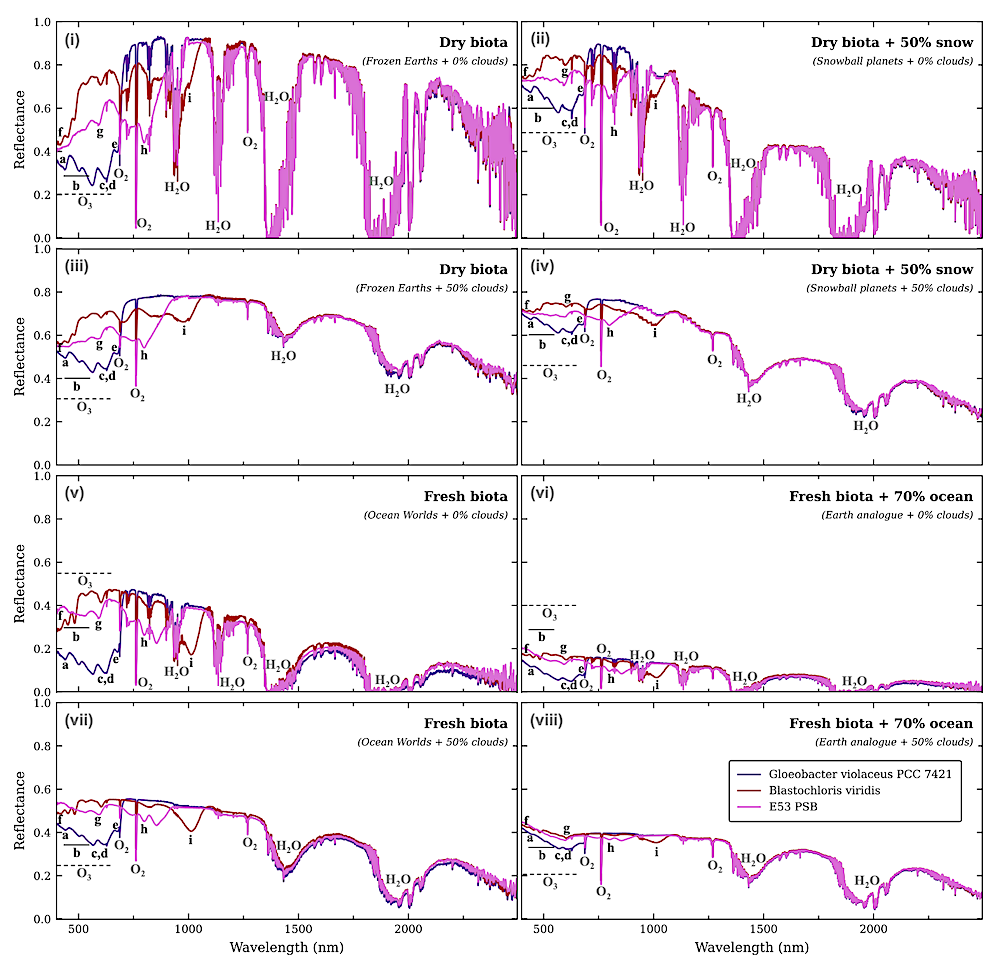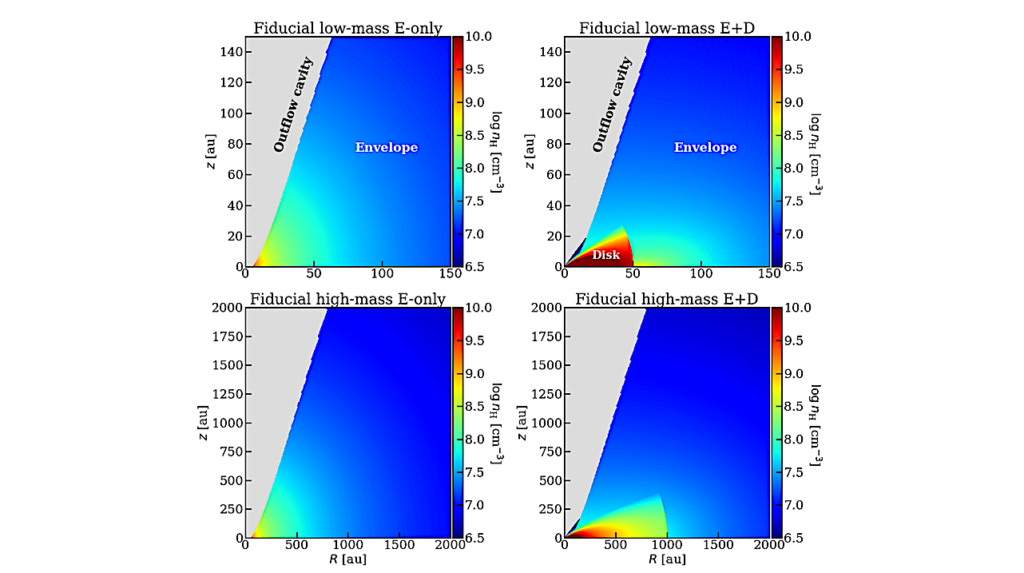Purple Is The New Green: Biopigments And Spectra Of Earth-like Purple Worlds

With more than 5,500 detected exoplanets, the search for life is entering a new era. Using life on Earth as our guide, we look beyond green landscapes to expand our ability to detect signs of surface life on other worlds.

Filters showing the measured purple non-sulfur bacteria (E01, E02, E11, E18, E23, E26, E33, E45, BV, and RV), purple sulfur bacteria (E03, E05, E06, E07, E10, E13, E28, E35, E41, E50, E51, E53), and purple cyanobacteria (Glo). For details on the biota see Table S1.’ — astro-ph.EP
While oxygenic photosynthesis gives rise to modern green landscapes, bacteriochlorophyll-based anoxygenic phototrophs can also colour their habitats and could dominate a much wider range of environments on Earth-like exoplanets.
Here, we characterize the reflectance spectra of a collection of purple sulfur and purple non-sulfur bacteria from a variety of anoxic and oxic environments. We present models for Earth-like planets where purple bacteria dominate the surface and show the impact of their signatures on the reflectance spectra of terrestrial exoplanets.
Our research provides a new resource to guide the detection of purple bacteria and improves our chances of detecting life on exoplanets with upcoming telescopes.
Our biological pigment data base for purple bacteria and the high-resolution spectra of Earth-like planets, including ocean worlds, snowball planets, frozen worlds, and Earth analogues, are available online, providing a tool for modellers and observers to train retrieval algorithms, optimize search strategies, and inform models of Earth-like planets, where purple is the new green.

Modelled reflectance spectra of Earth-like planets (top) for a frozen planet covered with 100 per cent dry biota (i) and a snowball planet covered with 50 per cent dry biota and 50 per cent snow (ii), which increases the overall reflectivity slightly. Adding a 50 per cent cloud cover (2nd row, iii and iv) reduces the overall reflectivity of these cold worlds due to the lower albedo of clouds compared to snow and the dry biota (see Fig. S1). The models of an ocean world (100 per cent fresh biota) and an Earth-analogue planet (70 per cent ocean and 30 per cent fresh biota) (3rd row, v and vi) show that the overall reflectivity of the planet decreases due to the lower reflectivity of the fresh biota as well as the low reflectivity of oceans compared to frozen worlds. Adding clouds to the planet (bottom, vii and viii) increases the overall reflectivity of the models because clouds reflect more light than oceans or fresh biota. Labels: (a) Chl-a Soret band, (b) Carotenoids, (c) Chl-a Qx band, (d) Phycobilins, (e) Chl-a Qy band, (f) BChl-a Soret band, (g) BChl-a, b Qx band, (h) BChl-a Qy band, and (i) BChl-b Qy band (Table S2). Atmospheric absorption features: O3 (450 to 740 nm), O2 (690, 760, and 1260 nm), and H2O (950, 1150, 1490, and 1900 nm). — astro-ph.EP
Ligia Fonseca Coelho, Lisa Kaltenegger, Stephen Zinder, William Philpot, Taylor L. Price, Trinity L. Hamilton
Comments: 7 pages, 3 figures, supplementary material: 3 figures and 2 tables
Subjects: Earth and Planetary Astrophysics (astro-ph.EP)
Cite as: arXiv:2404.10105 [astro-ph.EP](or arXiv:2404.10105v1 [astro-ph.EP] for this version)
Related DOI:
https://doi.org/10.1093/mnras/stae601
Focus to learn more
Submission history
From: Ligia Fonseca Coelho
[v1] Mon, 15 Apr 2024 19:38:04 UTC (3,150 KB)
https://arxiv.org/abs/2404.10105
Astrobiology








